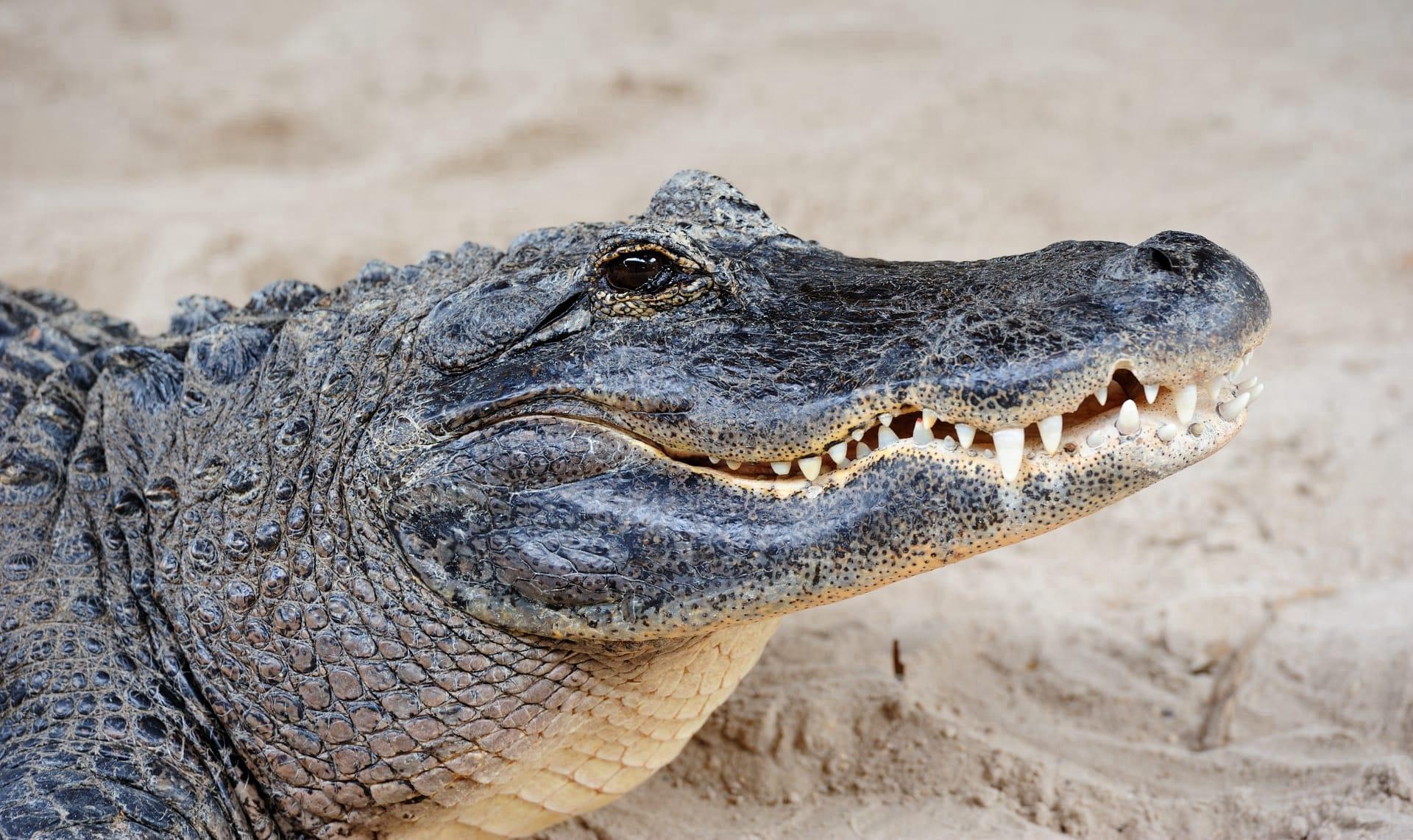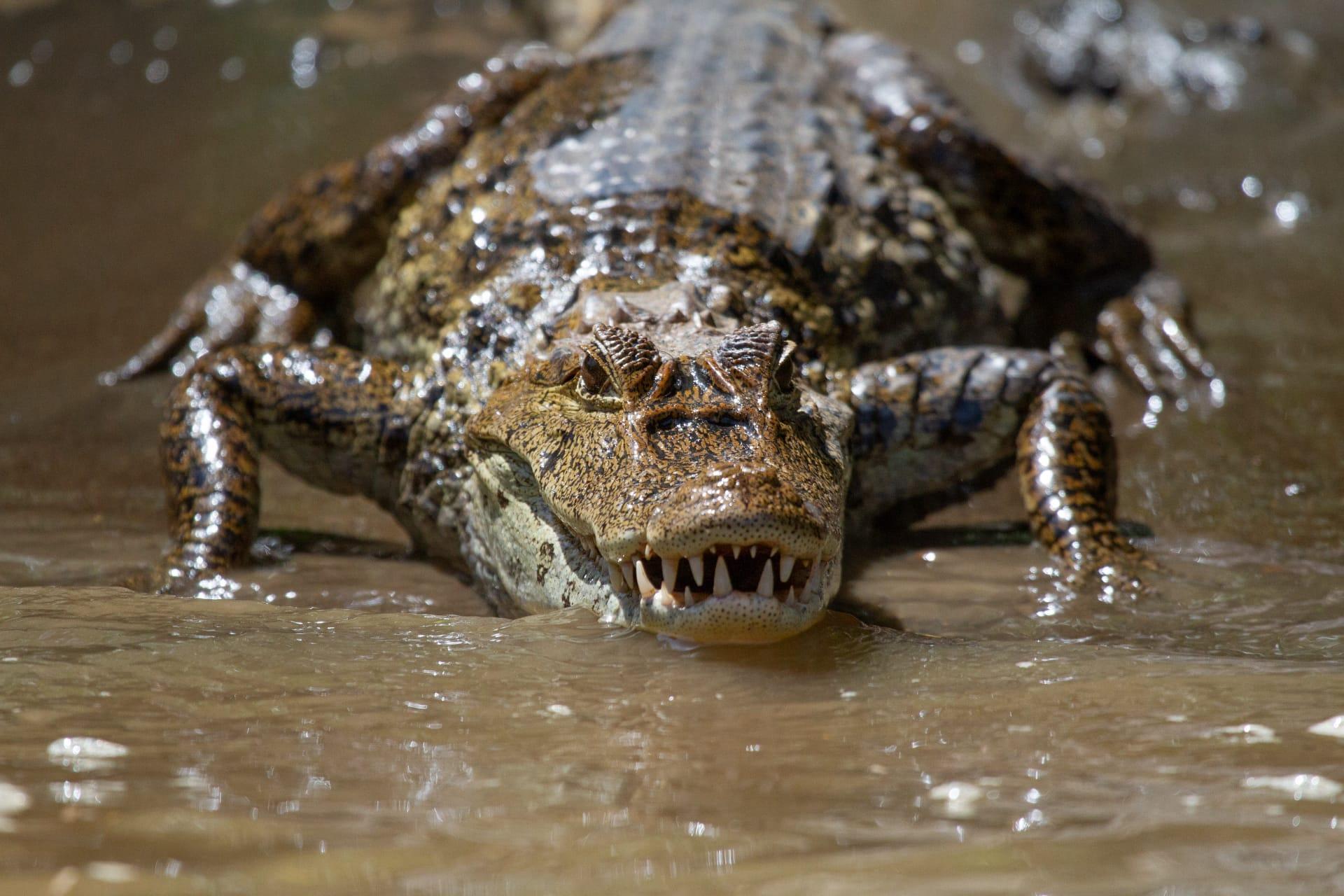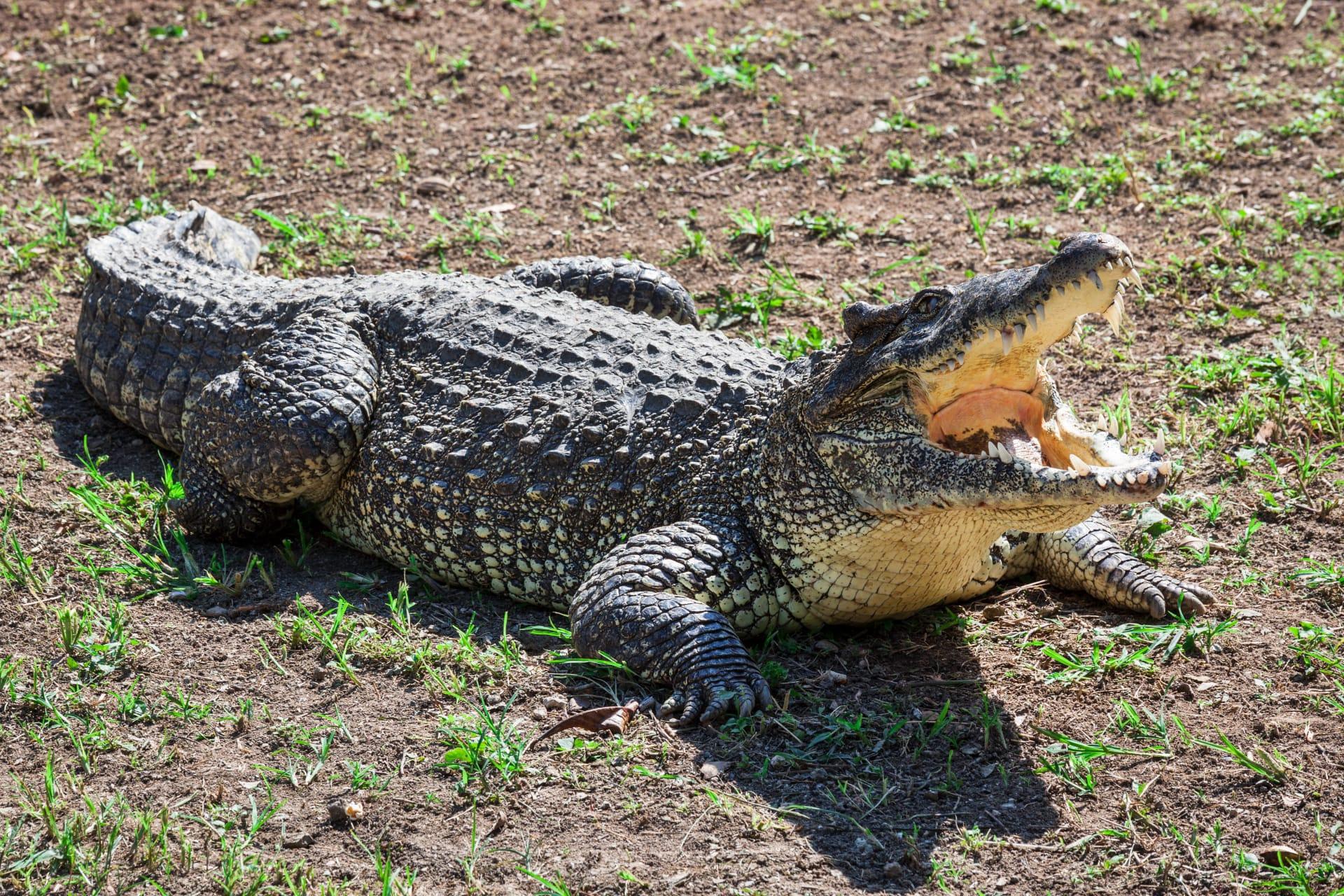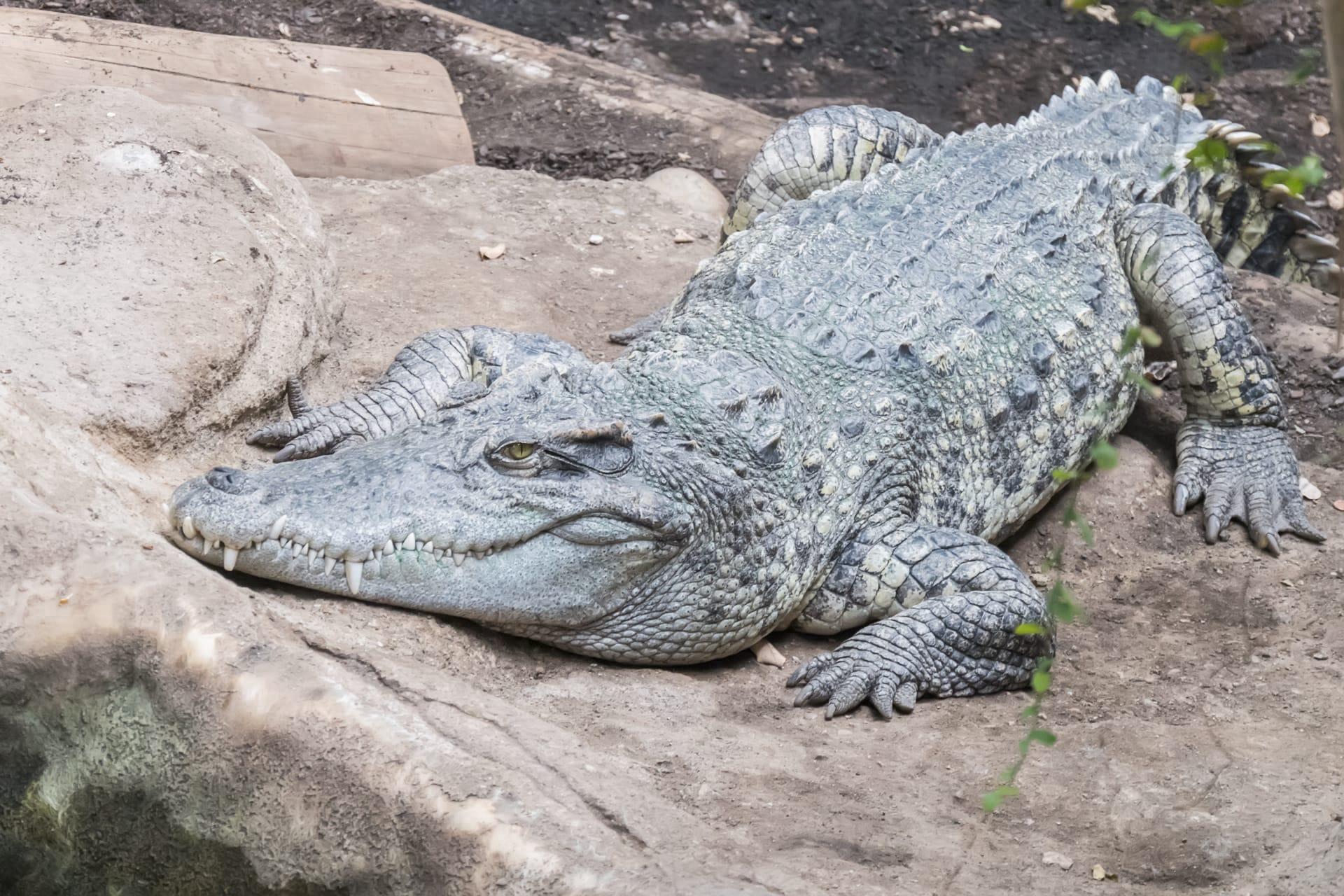1
Dwarf crocodiles, scientific name Osteolaemus tetraspis, are fascinating creatures primarily found in the rainforests and swamps of Sub-Saharan Africa. Unlike their larger cousins, these crocodiles are relatively small, reaching a maximum length of about 1.5 meters (5 feet). Their size is particularly interesting because it's a result of insular dwarfism, a process where species evolve smaller bodies due to limited resources in isolated environments like islands or isolated swamps.
Another intriguing aspect of dwarf crocodiles is their longevity and slow growth rate. These reptiles can live up to 75 years, a remarkable lifespan for their size. They grow slowly throughout their life, taking several years to reach maturity. This prolonged development is linked to their habitat's nutrient-poor conditions, which limits their growth. Additionally, their slow metabolism, a trait common among crocodilians, contributes to their extended lifespan.

2
Dwarf crocodiles exhibit a unique hunting strategy. They are nocturnal hunters, relying on the cover of darkness to ambush their prey. Their diet mainly consists of small mammals, amphibians, and fish. What's fascinating is their patient hunting technique. They can remain motionless for hours in shallow water, waiting for an unsuspecting victim. Once the prey is within reach, they strike with lightning speed, showcasing their adept hunting skills despite their small size.
Their nesting behavior is also noteworthy. Female dwarf crocodiles build mound nests made of vegetation, which they meticulously construct on riverbanks. These nests serve as incubators, where the heat generated from the decomposing vegetation helps in egg development. Females lay around 10 eggs, and interestingly, the temperature of the nest determines the sex of the hatchlings. A temperature of about 31 degrees Celsius (88 degrees Fahrenheit) produces a mix of male and female offspring, whereas slightly higher or lower temperatures result in gender-specific clutches.

3
Dwarf crocodiles have a distinctive physical appearance that sets them apart from other crocodile species. Their skin is heavily armored with bony plates called osteoderms, providing them with an extra layer of protection in their harsh habitats. This armor-like skin, along with their dark, often black coloration, helps them blend into the muddy waters and dense vegetation of their environment, making them excellent at camouflage.
They are also known for their "smiling" appearance. This is due to the unique structure of their jaw, which curves upwards at the ends, giving the illusion of a smile. This feature, combined with their smaller size, makes them less intimidating than other crocodile species, often leading to a mistaken perception of being less dangerous. However, despite their size and "friendly" appearance, they are still powerful predators capable of defending themselves fiercely when threatened.

4
Dwarf crocodiles have a fascinating adaptation to their aquatic lifestyle - they can hold their breath underwater for up to 15 minutes. This ability is crucial for both hunting and avoiding predators. When submerged, their heart rate slows down, and blood flow is restricted to essential organs, a process known as bradycardia. This physiological adaptation allows them to conserve oxygen while underwater.
Another interesting aspect of dwarf crocodiles is their vocal communication. Despite their solitary nature, they communicate with various sounds, especially during the mating season. These sounds include hisses, grunts, and growls. The most remarkable is the 'bellows' emitted by males, which are low-frequency sounds that can travel long distances underwater. These vocalizations play a crucial role in territorial displays and in attracting potential mates, demonstrating a complex social behavior not immediately apparent in such solitary creatures.

5
The dwarf crocodile's sense of touch is highly developed, particularly around their jaws. The integumentary sensory organs (ISOs), small black spots around their jaws, are extremely sensitive to changes in water pressure and vibrations. This sensitivity allows them to detect prey movements in murky waters where visibility is poor. These ISOs are so precise that they can detect even the slightest ripple, enabling them to catch prey with remarkable accuracy.
Lastly, dwarf crocodiles play a crucial role in their ecosystem. As apex predators, they help control the population of their prey, thereby maintaining a balanced ecosystem. Furthermore, their nesting behavior contributes to the nutrient cycle. The decaying vegetation in their nests not only incubates their eggs but also enriches the soil, promoting plant growth. This shows how even smaller predators like the dwarf crocodile have a significant impact on their environment, highlighting the importance of their conservation.